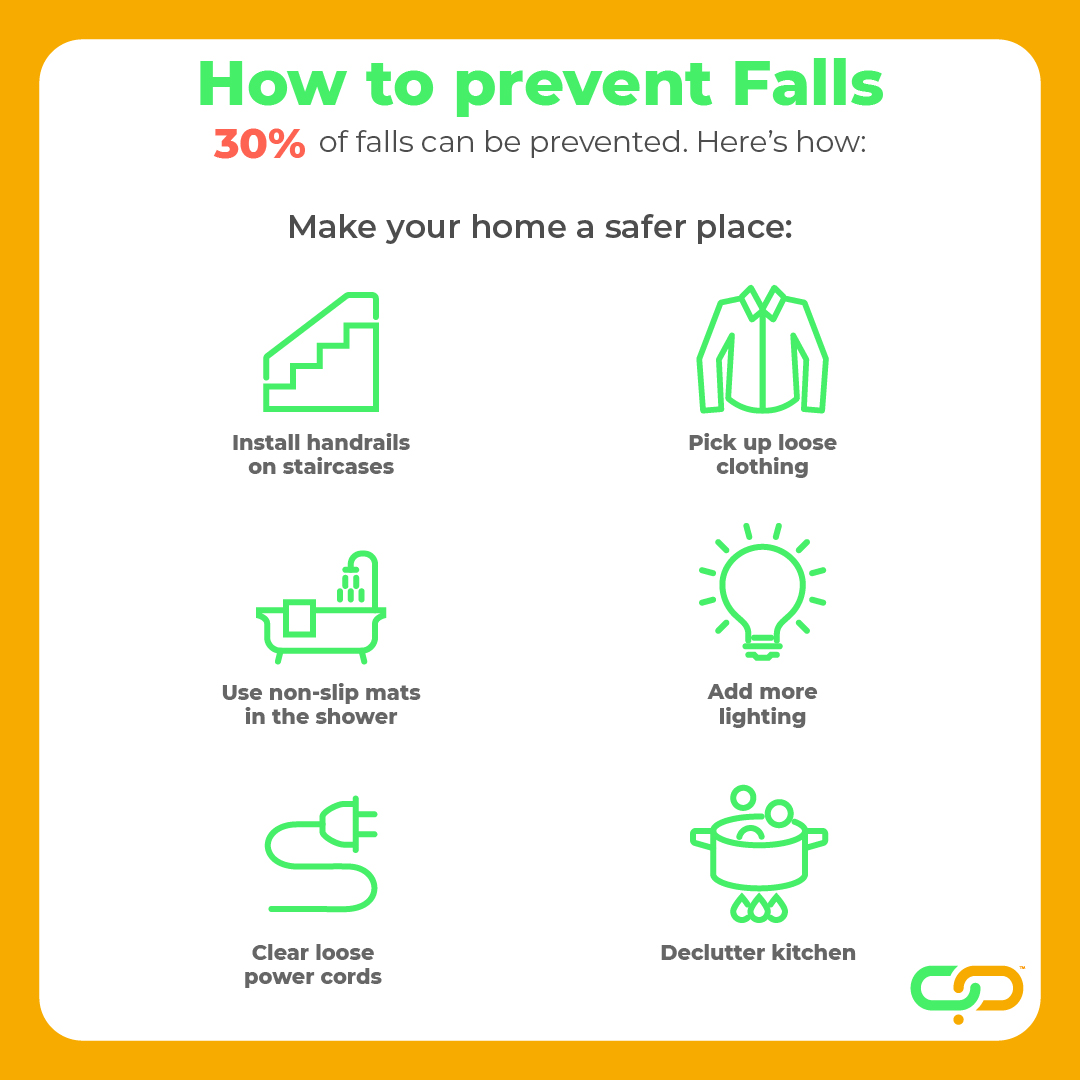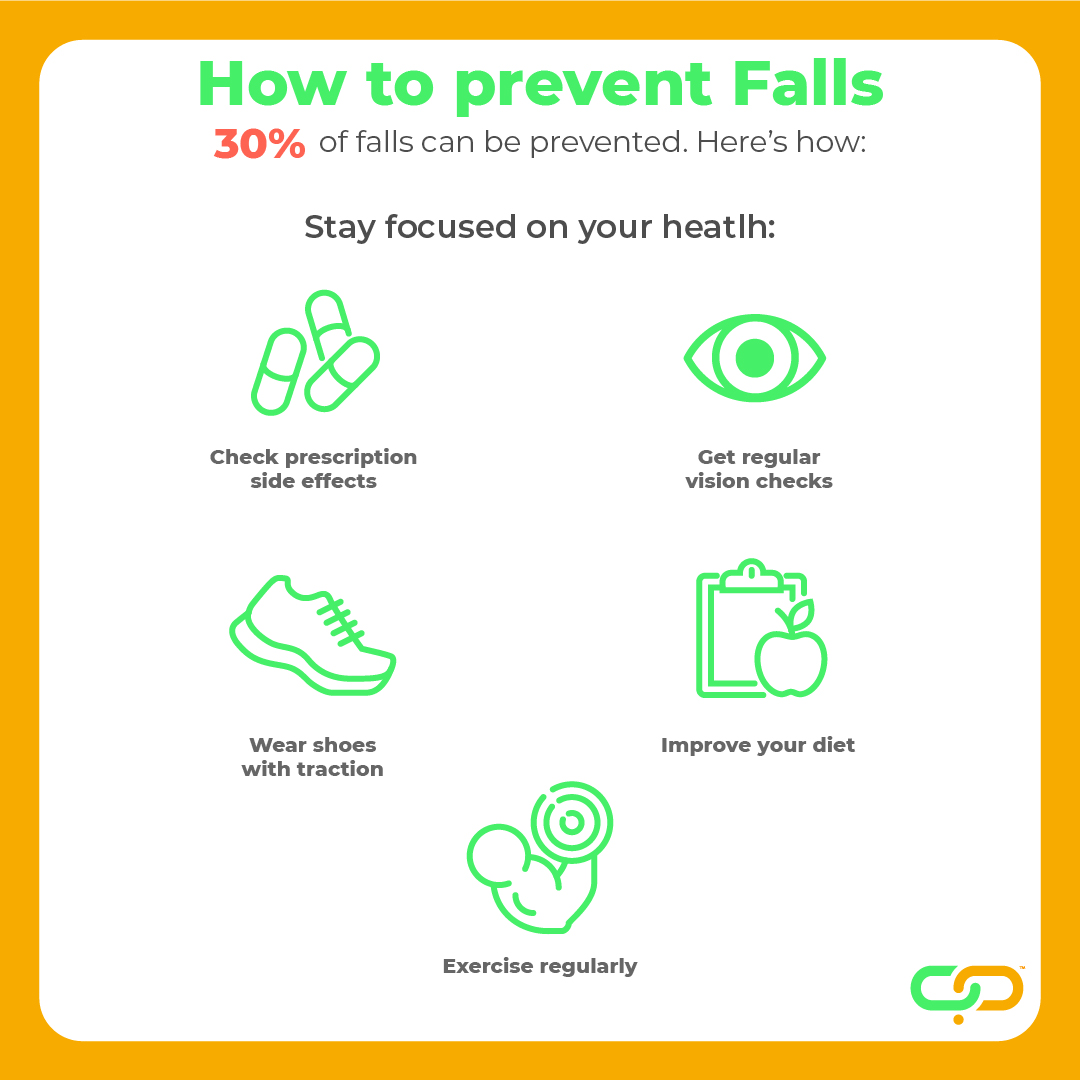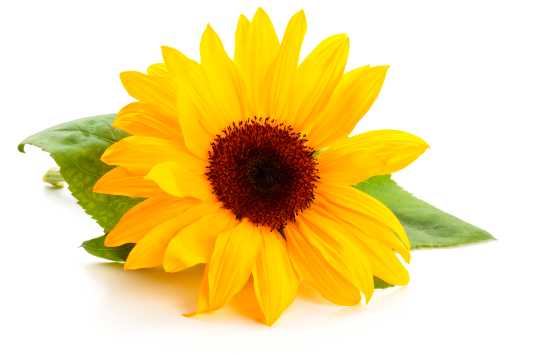Elderly adults of 65 or older are falling at an alarming rate of about one out of every three people. When adults in this age group fall, there can be severe consequences as well as life-changing ones. There can be broken bones, bruising, closed head injuries, and more.
If caregivers and home health providers are more aware of these issues, then they can advocate for their seniors to help prevent falls. By being aware, they can talk to their clients about removing or adjusting any potential tripping hazards.
We will cover the following:
Fall hazards for elderly adults and how to avoid the:
- Throw rugs
- Clutter
- Steps that are too steep or too long
- Poor Lighting
- Pets
- Sloping driveways
- Sidewalk cracks
- Fall hazards in rooms
- Tables or chairs which are unsteady
- Extension cords
- Toilet seats
When someone thinks of falling, they may think of falling down the stairs or perhaps off of a ladder. But other types of falls are much more frequent. Plus, most falls are on the same level such as:
Kitchen floors
Bathroom floors
Sidewalks & bathtubs
However, a senior can prevent falls by fall-proofing the home.


Throw rugs:
Throw rugs are one of the most significant tripping hazards among the elderly. A throw rug will bunch up into a lump which makes it easy for a senior to trip over.
The best option would be not to use them at all. However, if they have to be used, they can be tacked down to the floor with double-sided tape. The tape can be replaced when it no longer sticks to the rug or the floor.
Clutter:
Clutter is another culprit which can cause tripping and falling. Clutter can show up anywhere that it doesn’t belong with clutter on the stairs being the worse offender. To avoid a person from tripping over clutter, items need to have a place to be stored. If things are kept clean and straightened up, then tripping worries can be cut back.
Steps which are too steep or too long:
The surface of a staircase is not level, especially if carpeted. If the carpeting is too plush, then it makes the stair trend narrow, if it is thin, then it can be torn easily. If the staircase is too steep, the senior may not have enough energy or strength to make it to the top. This may cause the person to pause on the step or stop completely to catch their breath. The person’s muscles become fatigued, and this can cause a fall to happen quickly.
Poor Lighting:
When a senior’s home is poorly lit and dim, it increases the likelihood that something will be tripped over. On the other hand, it the light is too bright, then it can cause a glare. Keep the home well-lit but not overly bright.
Pets:
As much as a senior loves their pet, the pet can still be a tripping or falling hazard. The pet can lie in a direct walking path or suddenly move, which would cause the senior to fall over. This doesn’t mean the senior should get rid of their pet, just to be aware when the pet is at all times.
Sloping driveways:
A driveway that is sloping and has an uneven surface can cause a falling problem. There isn’t much a senior can do when walking on a sloped or uneven driveway but be mindful of the issue and use extra caution when walking.
Sidewalk cracks:
If there are cracks in the sidewalks leading up to an elderly person’s home, they need to be extra careful. A crack can catch their toe which will cause them to lose their balance and trip.
Fall hazards in rooms
Fall hazards in rooms can cause injuries unless noticed and taken care of or, at least be cautious when around them. Every room in a home can have it potential tripping hazards. Seniors need to use caution when entering one room and exiting another. Be aware when placing their feet down and walking to make sure the path is clear.
Tables or chairs which are unsteady:
If the senior is using a chair or piece of furniture to hold onto when walking, they need to be sure it’s steady. A wobbly chair or an armrest which is not sturdy can cause the senior to fall when they rest their weight on it. Or, the piece of furniture can fall over on them, injuring them in the process.
Extension cords:
Everyone uses extension cords without giving them much thought. However, if the cord is stretched across a walkway that the senior uses, the senior can trip and fall. Make sure the cords are close to a wall or taped down, so tripping and falling are avoided.
Toilet seats:
Another item which isn’t given much thought is the toilet seat. If the seat is too low, then it can cause falling. This is because an older person’s legs start to lose strength as they age. So when they stand up after using a toilet, their legs may give out, and they could fall. Installing grab bars by the toilet can help with this problem.
The most significant preventative measure for falling or tripping is for the seniors to be always aware of their surroundings.
How to prevent falls
The good news is that most of the common causes of falls can be prevented. Family or an In-Home elderly caregiver service can help fall proof the home. Likewise, they can work with the senior to make them more resilient and less likely to fall.
Some simple steps:
- Install grab bars for toilets, baths, showers, and make sure all stairs have sturdy handrails
- Move any cords or trip able objects from walking paths
- Replace any sliding rugs with non-slip mats – particularly in bathrooms and kitchens
- Add nonslip treading to exterior steps and walkways
- Give seniors comfortable, skid-proof shoes
- Physical activity and nutrition continue to be important. Walking is excellent, and many fitness centers have activities like yoga, swimming and Tai Chi set aside for seniors.
- In-home elderly care services can arrange for a Physical Therapist to visit seniors in their home to prevent or recover from a fall injury. Home Care services can also help with meal prep and vitamin supplementation to keep bones strong.
Sources:
1. http://shellpoint.org/blog/2012/08/13/10-shocking-statistics-about-elderly-falls/
2. http://www.cdc.gov/homeandrecreationalsafety/falls/adultfalls.html


